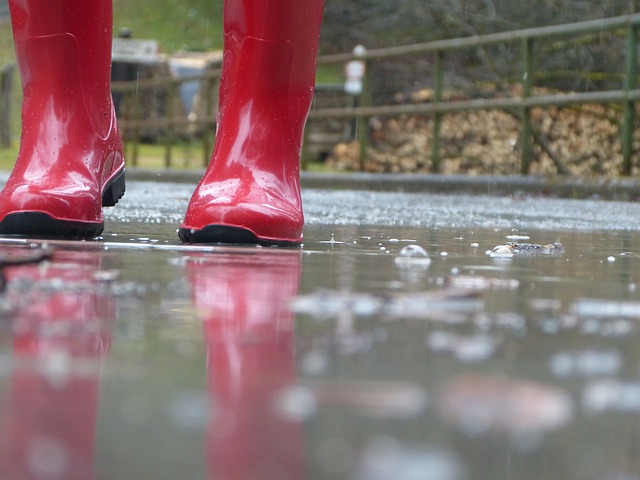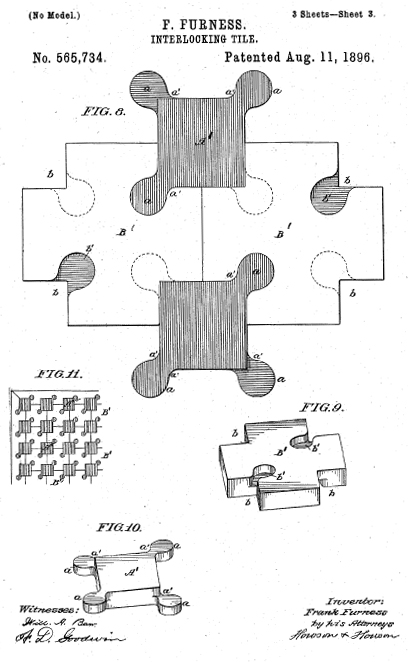Rubber flooring
Contents |
[edit] Introduction
The term ‘flooring’ refers to the lower enclosing surface of spaces within buildings. This may be part of the floor structure, such as the upper surface of a concrete slab or floor boards, but typically it is a permanent covering laid over the floor. There is a wide range of flooring materials available, including rubber flooring.
For more information see: Types of flooring.
[edit] History of rubber
Around 1600 BC, Mesoamerican civilisations extracted sap from rubber trees to make the earliest-known natural forms of rubber. Evidence of its existence illustrates how the substance was used for practical purposes (such as waterproofing) and for leisure activities (such as balls used for Mayan and Aztec sporting events).
Scientists in France, England and Italy explored and expanded the uses of rubber in the 1700s, but its applications were still relatively limited. In 1839, the chemical process of sulfur vulcanisation was used by Charles Goodyear to modify the properties of rubber (such as durability and elasticity) and create a synthetic, stable form of the material that could be used in a wide variety of applications. Eventually, this durable form of rubber was incorporated into the manufacture of automobile tyres, medical gloves, toy balloons and many other household and industrial products.
South America remained the primary source of the material until seeds were exported to other parts of the world in the 1800s. Today, the majority of the world’s natural rubber comes from Thailand, Indonesia and Malaysia; leaf blight and other environmental issues have significantly reduced the production of natural rubber in South America.
[edit] Rubber flooring applications
In 1896, the first interlocking rubber floor tile was patented by Frank Furness, but prior to World War II, rubber flooring was not commonly used.
Illustration of Frank Furness patent for rubber flooring, 1896
During that time it was primarily used to make floor mats for the automotive industry. Rubber based adhesives were also incorporated into carpet backing.
After World War II, rubber flooring gained popularity. It was introduced into hospitals, sports facilities, laboratories, schools, garages, electronic manufacturing sites and other applications where water resistance, durability, insulation, non-slip, anti-fatigue, anti-bacterial and anti-static characteristics were required.
Today, rubber flooring is made from natural or synthetic materials, including recycled rubber tyres. It is categorised as a resilient flooring, because it exhibits characteristics of elasticity or ‘bounce’. This also makes it suitable for dance floors, restaurants and other high-traffic areas where foot fatigue and slippage can occur.
Rubber flooring is also becoming more common in residential installations. It is being used for children’s playrooms, shower and bathrooms, garages, home gymnasiums and other applications that tend to require moisture and stain resistance, sound absorption, durability, elasticity and temperature stability.
[edit] Types of rubber flooring
Rubber flooring can be homogeneous (with colour uniformly distributed through the entire product) or laminated (with patterns and colours only applied to the top layer of the product. It comes in three main types: interlocking tiles, square edge tiles and sheets or rolls.
Interlocking can be installed using a free lay method that does not require adhesive. Instead, they lock together. While this is a somewhat temporary method of installation, the tiles should not shift due to their locking characteristics.
Square edge tiles can be installed through the free lay method as well. However, they typically require an adhesive for permanent installation. They are cut with a sharp edge that is designed to create a virtually seamless finish from one tile to the next.
Rolls are usually glued down in permanent installations. This type of installation can be a large project and may be best handled by a flooring professional.
[edit] Sustainability
Some rubber flooring manufacturers have incorporated environmentally sensitive approaches into their product development. These products can qualify for Leadership in Energy and Environmental Design (LEED) and Building Research Establishment Environmental Assessment Method (BREEAM) credits for green buildings and comply with Blue Angel low emission certification (in Germany) and GREENGUARD Certification from UL Environment (in the United States).
[edit] Maintenance
In most residential instances, rubber flooring can be cleaned by vacuuming up debris and then washing surfaces with soap and water or specialist floor cleaning detergents. In commercial applications, it may be necessary to use professional products designed specifically for the environment. For instance, infection control products can be used on rubber flooring installed in healthcare environments.
At the end of life, many rubber flooring products can be recycled.
[edit] Related articles on Designing Buildings Wiki
- Blue Angel ecolabel.
- BREEAM Wiki.
- Floor definition.
- Floor slab.
- GREENGUARD Certification.
- Insulation for ground floors.
- Leadership in Energy and Environmental Design LEED
- Linoleum.
- Polymeric flooring.
- Raised floor.
- Resin flooring.
- Resilient Floor Covering Institute.
- Resilient flooring.
- Separating floor.
- Types of floor.
- Types of flooring.
- Vinyl flooring.
Featured articles and news
RTPI leader to become new CIOB Chief Executive Officer
Dr Victoria Hills MRTPI, FICE to take over after Caroline Gumble’s departure.
Social and affordable housing, a long term plan for delivery
The “Delivering a Decade of Renewal for Social and Affordable Housing” strategy sets out future path.
A change to adoptive architecture
Effects of global weather warming on architectural detailing, material choice and human interaction.
The proposed publicly owned and backed subsidiary of Homes England, to facilitate new homes.
How big is the problem and what can we do to mitigate the effects?
Overheating guidance and tools for building designers
A number of cool guides to help with the heat.
The UK's Modern Industrial Strategy: A 10 year plan
Previous consultation criticism, current key elements and general support with some persisting reservations.
Building Safety Regulator reforms
New roles, new staff and a new fast track service pave the way for a single construction regulator.
Architectural Technologist CPDs and Communications
CIAT CPD… and how you can do it!
Cooling centres and cool spaces
Managing extreme heat in cities by directing the public to places for heat stress relief and water sources.
Winter gardens: A brief history and warm variations
Extending the season with glass in different forms and terms.
Restoring Great Yarmouth's Winter Gardens
Transforming one of the least sustainable constructions imaginable.
Construction Skills Mission Board launch sector drive
Newly formed government and industry collaboration set strategy for recruiting an additional 100,000 construction workers a year.
New Architects Code comes into effect in September 2025
ARB Architects Code of Conduct and Practice available with ongoing consultation regarding guidance.
Welsh Skills Body (Medr) launches ambitious plan
The new skills body brings together funding and regulation of tertiary education and research for the devolved nation.
Paul Gandy FCIOB announced as next CIOB President
Former Tilbury Douglas CEO takes helm.
UK Infrastructure: A 10 Year Strategy. In brief with reactions
With the National Infrastructure and Service Transformation Authority (NISTA).
























